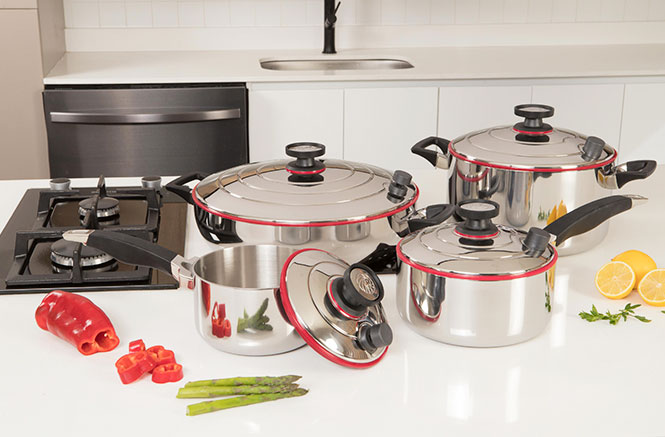Stock Pots: What are the keys for choose
Stock pots are essential items in any kitchen, whether at home or in a commercial setting. They are used for preparing soups, stews, and other dishes that require a large quantity of liquid. When choosing a stock pot, there are several key factors to consider, including size, material, and features. In this article, we’ll explore these factors in more detail, giving you the information you need to choose the perfect stock pot for your kitchen.

Size
One of the most important factors to consider when choosing a stock pot is size. Stock pots come in a variety of sizes, from small4-quart models to large20-quart models. The size you choose will depend on the amount of food you need to prepare and the number of people you are serving.
For home use, a6 to8-quart stock pot is usually sufficient for most families. For larger families or those who entertain frequently, a10 to12-quart pot may be more appropriate. For commercial kitchens or those who frequently prepare large quantities of food, a16 to20-quart stock pot may be necessary.
Material
The material of the stock pot is also an important consideration. The most common materials used for stock pots are stainless steel, aluminum, and copper. Each material has its own pros and cons, and the material you choose will depend on your needs and preferences.
Stainless steel is a popular choice for stock pots because it is durable, easy to clean, and does not react with acidic foods. However, it is not the best conductor of heat and may take longer to heat up and cool down.
Aluminum is an excellent conductor of heat and is lightweight, making it easy to handle. However, it can react with acidic foods and may be prone to denting and scratching.
Copper is an excellent conductor of heat and is also very attractive. However, it is expensive and requires more maintenance than other materials.
Features When choosing a stock pot, there are several features to consider that can make cooking easier and more efficient. Here are some features to look for:
- Lid: A tight-fitting lid is essential for trapping heat and steam, which can help food cook faster and more evenly.
- Handles: Look for handles that are sturdy and comfortable to grip. Stay-cool handles are also a nice feature, especially if you’ll be moving the pot from the stove to the sink or countertop.
- Nonstick coating: Some stock pots feature a nonstick coating, which can make cleaning up easier. However, this coating may wear off over time, especially if the pot is used frequently.
- Strainer insert: Some stock pots come with a strainer insert that fits inside the pot, making it easy to strain out solids from soups and stews.
Conclusion
In summary, when choosing a stock pot, consider the size, material, and features that will best meet your needs. A good stock pot can last for many years and make cooking easier and more enjoyable. By taking the time to choose the right pot, you can ensure that you’ll be able to prepare delicious soups, stews, and other dishes for years to come.